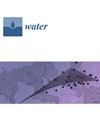Source, Distribution and Transformation of Organic Matter in a Subtropical Karst Reservoir
IF 3
3区 环境科学与生态学
Q2 ENVIRONMENTAL SCIENCES
引用次数: 0
Abstract
In order to improve the understanding of the global carbon cycle and the stability of karst carbon sinks, it is necessary to better understand the source, distribution and transformation characteristics of organic matter (OM) in aquatic ecosystems. Here, stable isotope ratios (δ13C and δ15N), elemental analysis (C/N ratios), and lipid biomarkers were analyzed for dissolved organic matter (DOM) (<0.7 μm), particulate organic matter (POM) (>0.7 μm) of water, and organic matter from sediment cores (SCOM) to identify the sources, distribution, and transformation of OM in a subtropical karst reservoir. The results showed that short-chain (C14–20) n-alkyl lipids were more abundant than long-chain (C21–34) n-alkyl lipids in both the DOM and SCOM samples, indicating that bacteria were the primary sources of these lipids, while terrestrial organic matter (OM) made only a minor contribution to the n-alkyl lipid pool, and aquatic plants (macrophytes) OM contributed major contribution to the n-alkyl lipid pool in POM. Microbial activity and lipid degradation were more pronounced in the DOM. Furthermore, terrigenous and macrophyte-derived lipids were found to be more abundant in POM than in DOM and SCOM, suggesting that they are relatively resistant to degradation compared with phytoplankton-derived OM.亚热带岩溶储层有机质来源、分布与转化
为了提高对全球碳循环和喀斯特碳汇稳定性的认识,有必要更好地了解水生生态系统中有机质的来源、分布和转化特征。通过对水中溶解有机质(DOM) (<0.7 μm)、水中颗粒有机质(POM) (>0.7 μm)和沉积物岩心有机质(SCOM)的稳定同位素(δ13C和δ15N)、元素分析(C/N)和脂质生物标记物进行分析,确定了亚热带岩溶储层有机质的来源、分布和转化。结果表明,DOM和SCOM样品中短链(C14-20) n-烷基脂含量均高于长链(C21-34) n-烷基脂,表明细菌是n-烷基脂的主要来源,陆源有机质(OM)对n-烷基脂库的贡献较小,水生植物(大型植物)OM对POM中n-烷基脂库的贡献最大。微生物活性和脂质降解在DOM中更为明显。此外,在POM中发现陆源和大型植物来源的脂质比DOM和SCOM中更丰富,这表明它们与浮游植物来源的OM相比具有相对的抗降解能力。
本文章由计算机程序翻译,如有差异,请以英文原文为准。
求助全文
约1分钟内获得全文
求助全文
来源期刊

Water
WATER RESOURCES-
CiteScore
5.80
自引率
14.70%
发文量
3491
审稿时长
19.85 days
期刊介绍:
Water (ISSN 2073-4441) is an international and cross-disciplinary scholarly journal covering all aspects of water including water science and technology, and the hydrology, ecology and management of water resources. It publishes regular research papers, critical reviews and short communications, and there is no restriction on the length of the papers. Our aim is to encourage scientists to publish their experimental and theoretical research in as much detail as possible. Full experimental and/or methodical details must be provided for research articles. Computed data or files regarding the full details of the experimental procedure, if unable to be published in a normal way, can be deposited as supplementary material.
 求助内容:
求助内容: 应助结果提醒方式:
应助结果提醒方式:


